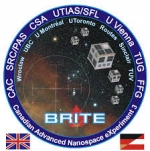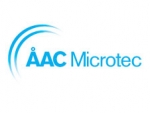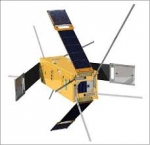Displaying items by tag: small satellite
AAC Clyde Space
At AAC Clyde Space we specialise in providing advanced small spacecraft, mission services, and subsystems. We are the market leader in small satellite solutions and services for government, commercial, and educational organisations.
CubeSail
CubeSail is an educational satellite project at the Surrey Space Centre (SSC).
Several PhD projects are centred on its development, and it will serve as a technology platform for at least two further educational satellites developed at SSC. The CubeSail mission objectives are ambitious, and will raise the Technology Readiness Level (TRL) of several technologies to flight demonstration level. A key feature is the deployment of a 25m2 sail structure, which will be used to demonstrate the propulsive effect of solar radiation pressure (i.e. solar sailing) and will demonstrate the de-orbiting capabilities of the sail as a drag augmentation device.
CubeSail will be the first launched three-axis stabilised solar sail, and makes use of a novel centre of mass/centre of pressure (CM/CP) offset technique to provide enhanced attitude control. In order to achieve the mission objectives, CubeSail will build on small satellite experience at SSC, such as the STRaND-1 nanosatellite, launched on February 25th 2013.
Furthermore, the mission critical sail deployment mechanism has undergone an extensive testing and validation process as part of the ESA Gossamer Deorbiter project carried out at SSC. The Cubesail project is also financially and technically supported by industrial partners, Astrium and Surrey Satellite Technology Ltd.
NanoSatisfi
NanoSatisfi is an American start-up company manufacturing innovative research satellites for use by private individuals.
NanoSatisfi sees its development as a ' Rent-a-Satellite' company: it proposes convenient, affordable, on-demand access to satellites. NanoSatisfi began with a simple idea: access to Space should be simple, and widespread.
XPOD Separation System
The XPOD Separation System was developed through the SFL CanX Nanosatellite Program.
The XPOD is an enclosed "jack-in-the-box" container for separating nanosatellites from virtually any launch vehicle. Various models are available, including models compatible with the CalPoly CubeSat standard. Once a deployment signal is received from the launch vehicle, a power supply inside the XPOD activates a release mechanism causing a door to open and the spacecraft to be ejected. The XPOD implements a single-failure fail-operational design, and is customizable for spacecraft up to 14kg with arbitrary dimensions. Also available are semi-enclosed (or "open concept") designs that accommodate fixed appendages. Recently, six XPODs flew successfully aboard PSLV-C9 including the XPOD Single, XPOD Triple, and XPOD GNB models (pictured above).
UniBRITE-1 satellite
UniBRITE-1 is, along with TUGSAT-1, one of the first two Austrian satellites to be launched.
Along with TUGSAT, it operates as part of the BRIght-star Target Explorer constellation of satellites. The two spacecraft were launched aboard the same rocket, an Indian PSLV-CA, in February 2013. UniBRITE is an optical astronomy spacecraft operated by the University of Vienna as part of the BRIght-star Target Explorer programme.
UniBRITE-1 was manufactured by the University of Toronto based around the Generic Nanosatellite Bus.
SpaceQuest Ltd
SpaceQuest Ltd is a spacecraft components and engineering company located in Virginia, USA, which focuses on the operations of small satellites.
The company designs, develops, constructs, launches and operates microsatellites and spacecraft components. SpaceQuest qualifies its components for use in space by flying them on its own satellites. SpaceQuest also operates a fleet of low earth orbing satellites, which are used for remote monitoring as well as tracking the location and status of large vessels at sea.
BRITE constellation
The BRITE constellation is a network of nano-satellites to investigate the properties of the brightest stars in the sky. It currently consists of a group of six nano-satellites which will participate in a common effort to study the variability of bright stars.
BRITE means BRIght-star Target Explorer.
Three countries are contributing spacecraft:
- AUSTRIA with BRITE-AUSTRIA (TUG-SAT-1) and UniBRITE satellites,
- POLAND with BRITE-PL (a.k.a 'Lem') and BRITE-PL2,
- as well as CANADA with BRITE-CA1 and BRITE-CA2.
ÅAC Microtec AB
ÅAC Microtec is a company developing miniaturized and robust multifunctional electronics systems.
By combining the best suitable packaging techniques we offer solutions based on state-of-the art microelectronics and MEMS technology, and services for optimal life cycle performance.
ÅAC Microtec was founded in 2005 as a spin-off from Uppsala University's Ångström Laboratory. It began with a vision to develop nanosatellites that were easy to launch. It became a center of academic excellence in miniaturizing and packaging electronics with mechanics. On January 21, 2009, the vision became a reality when our flight computer went into orbit onboard SpriteSat, a Japanese satellite built to observe terrestrial lightning flashes in the upper atmosphere.
AAC Microtec is supporting NASA for the integration and commercialization of small satellites.
Delfi-C3 nanosatellite
Delfi-C3 is a CubeSat satellite constructed by students at the Delft University of Technology in the Netherlands.
Delfi-C3 is the first nanosatellite student project from the Delft University of Technology in the Netherlands. The satellite is based on the CubeSat concept and a number of novel technologies will be tested on board the satellite.
It is a 3-unit CubeSat, and was launched on 28 April 2008, as part of the NLS-4 mission, aboard a PSLV rocket, from the Second Launch Pad at the Satish Dhawan Space Centre in India.
CGS SpA
CGS SpA is an Italian prime contractor for small satellites.
CGS SpA provides the user community with solutions for space science and space applications by:
- Exploiting the potential of small and medium satellite missions;
- Exploiting orbital and transportation systems;
- Focusing on the technologies that can be turned into products for scientific and application projects;
- Developing technologies for Earth Observation services.










